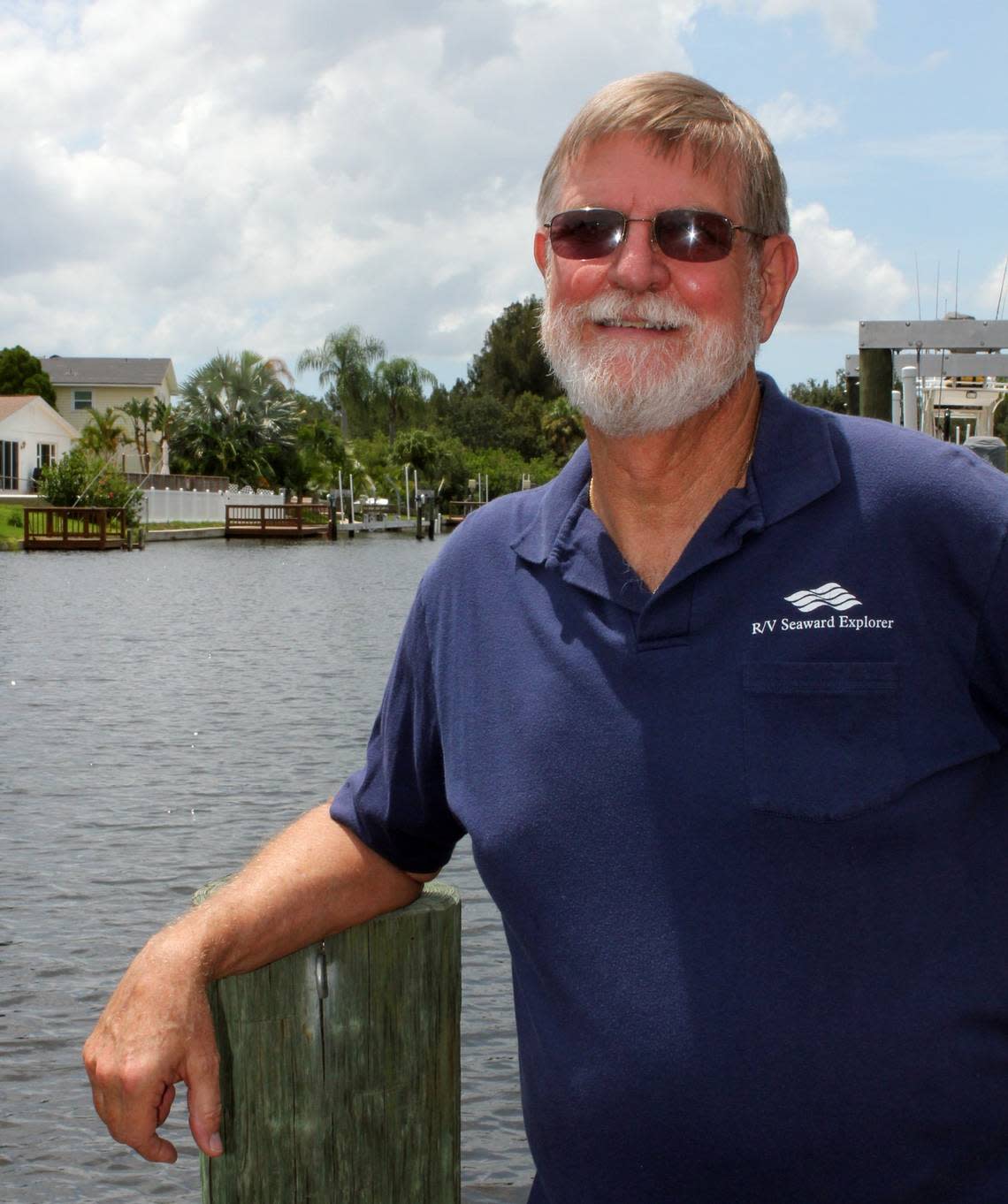‘At the mercy of the storm.’ Captain recalls riding Hurricane Andrew on board his ship
This article was originally published in the Miami Herald on August 19, 2012 for the 20th anniversary of Hurricane Andrew.
Finally, the strain was too much. The anchor rope, a towing hawser as thick as a man’s arm, snapped.
The stout steel ship turned into the teeth of the howl, its twin 478-horse diesels struggling to hold position. Outside the rolling wheelhouse, Biscayne Bay looked like one green sheet of sideways screaming water. It was 2 a.m. Monday, Aug. 24, 1992. The barometer was sinking like a stone. The blue flash of an electrical short suddenly lit up the engine room.
Capt. Peter Skipp knew he was in danger of losing the Seaward Explorer, a 105-foot research vessel-for-hire he’d owned for a decade. “We were pretty much at the mercy of the storm.”
Andrew would kill two men aboard a sport-fishing boat anchored off Elliott Key, one decapitated by flying debris, the other swept overboard, his remains discovered 11 years later on the island by a Biscayne National Park archaeologist. Skipp, a veteran skipper, now 65 and co-owner of Dockside Marine Electronics in Miami, insists he never considered his life at risk in the shallow bay.
“Where would you rather spend a hurricane, a big steel box or a house with a wooden roof?” he asks. “I’m picking the big steel box. If it sinks, I’m just climbing up another level.’‘
But he was deeply worried about losing his livelihood.

Skipp never planned to ride out one of the fiercest storms in history in the open bay. He’d reserved a hurricane hole up the Miami River before the season and had a handshake agreement to moor at the Port of Miami as backup - until Andrew’s intensity took South Florida by surprise. By the time he rounded up two crew members early Sunday, those options were gone. The Brickell Avenue bridge was locked down. He was threatened with arrest when he tried to tie up at the port.
The Seaward Explorer, a converted offshore oil rig supply vessel, was a fullback of a hull - ruggedly built to bounce off steel rigs in the heavy seas but snail slow. Skipp ruled out running offshore as foolhardy.
The bay was the best bet but still a gamble. All he had aboard were two light-duty anchors, 500 pounds each, and a single 2,000-pounder. If he’d had more warning, he’d have loaded a 5,000-pound, even 10,000-pound anchor along with heavy chain.
Just outside Dinner Key Channel, he dropped the big anchor from the stern where the ship rode best in big winds. He worked the diesels to ease pressure on the line but as Andrew grew stronger, it steadily shoved the Explorer south, dragging its one-ton anchor. Hours and eight miles later, the anchor line finally broke. As Skipp swung the bow back into gale, hoping to drop the two smaller anchors, an electric short in the engine room erupted in the blue flash. He lost steering and power to the anchor windlass.
“There wasn’t much we could do,” he says. “We didn’t have any liquor on board so we couldn’t get drunk.”
Skipp sat in the wheelhouse with a feeling he’d never had in decades at sea: helplessness. His ship was adrift with Andrew’s awful eye bearing down.
At the worst moment, luck finally turned. Perhaps 20 minutes later, two bumps shook the ship (the balcony of a house and a tree, he later realized.) It spun once and then came to a dead stop. Surfing the peak of Andrew’s 16.9-foot storm surge, the Explorer had come ashore just south of the Deering Estate along a canal spillway in the backyard of a mansion on Old Cutler Drive.
It would remain there three months, becoming a tourist attraction and an iconic image of Andrew’s power. Had it run aground anywhere else, wreckers would have been forced to cut up the heavy ship, but crews were able to move and refloat it. After repairs, Skipp ran the Explorer for another three years before selling it.
Twenty years later, Skipp still smiles at the greeting he got from the wealthy couple, accompanied by their bodyguard, who emerged from a harrowing night to find a hulking black ship in their backyard. The wife, Skipp said, was hysterical. “She was yelling, ‘When are you going to get this thing out of here?’ I said, ‘Oh, no problem, next high tide, we’ll just back it right out.’ “
